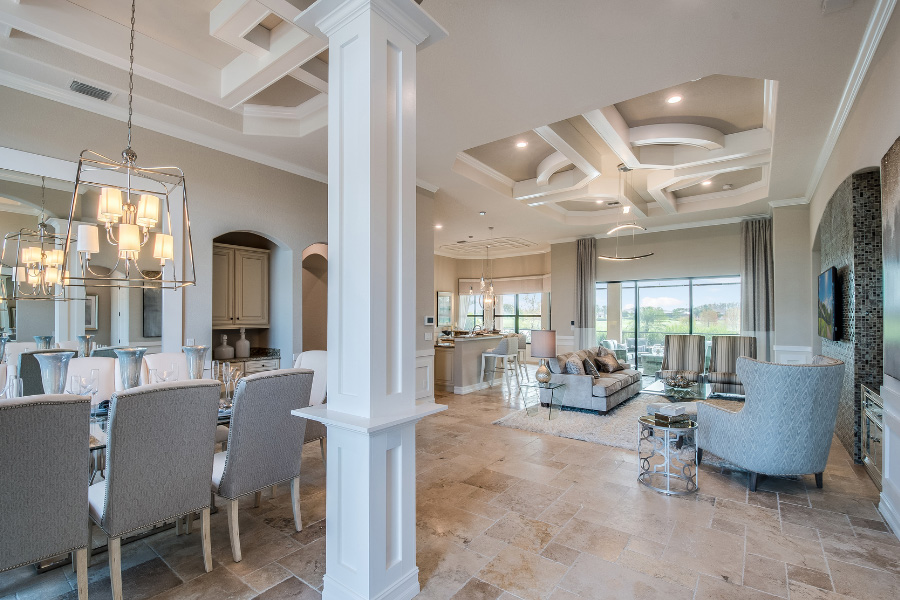Maximizing Natural Light: Utilizing natural light sources and ensuring proper lighting fixtures to create a bright and inviting atmosphere.
One of the most important factors in creating a bright and inviting atmosphere in any space is maximizing natural light. Natural light not only helps to make a room feel more spacious, but it also has a positive impact on our mood and overall well-being. To utilize natural light sources effectively, it’s important to make sure that windows are unobstructed and clean. This allows for maximum sunlight to enter the room and creates a sense of openness and freshness. Additionally, choosing light-colored window treatments, such as sheer curtains or blinds, can help to diffuse the sunlight and create a soft, glowing effect throughout the space.
In addition to utilizing natural light sources, ensuring proper lighting fixtures is crucial for creating a bright and inviting atmosphere. While natural light should be the primary source of illumination during the day, it’s important to have a combination of ambient, task, and accent lighting for the evenings. This can be achieved through the use of ceiling fixtures, floor lamps, table lamps, and wall sconces. By incorporating various light sources, you can create layers of light that add depth and interest to the room. Additionally, choosing light bulbs with warmer color temperatures can help to create a cozy and welcoming ambiance in the evening hours.
Arranging Furniture: Arranging furniture in a way that optimizes the flow of the space and highlights the functionality of each room.
When it comes to arranging furniture in your home, it is important to consider both the flow of the space and the functionality of each room. By optimizing the layout, you can create a harmonious and efficient living space. Start by analyzing the size and shape of the room, as well as the location of doors, windows, and other architectural features. This will help you determine the best placement for larger furniture pieces such as sofas, beds, and dining tables.
Once you have established the placement of larger items, focus on creating clear pathways and zones within the room. Ensure there is enough space to comfortably move around and access different areas. For instance, leave enough room between the couch and coffee table for people to walk through, or allow space around the dining table for chairs to be pulled out. By considering these factors, you can optimize the flow of the space and make it easier for people to navigate and interact within the room.
Showcasing Room Purposes: Staging each room with a clear purpose in mind, such as a home office, a guest bedroom, or a cozy reading nook.
To effectively showcase the purposes of each room in your home, it is important to stage them with a clear vision in mind. Whether you are creating a home office, designing a guest bedroom, or crafting a cozy reading nook, thoughtful staging can bring these spaces to life and make them functional and inviting.
When staging a home office, it is crucial to prioritize functionality and productivity. Choose a quiet and well-lit area where you can focus and work comfortably. Invest in a sturdy desk and a comfortable chair that provides proper support for long hours of work. Consider adding shelves or storage solutions to keep your workspace organized and clutter-free. Additionally, incorporate elements like a whiteboard or bulletin board to help you stay organized and keep track of important tasks. By staging your home office with purpose, you can create a space that fosters productivity and enhances your workflow.
For a guest bedroom, focus on creating a welcoming and comfortable environment for your guests to enjoy during their stay. Choose a neutral color palette to create a serene atmosphere, and invest in a high-quality mattress and bedding to ensure a restful and relaxing experience. Consider adding functional and stylish furniture pieces like a bedside table with a reading lamp, storage for guests to keep their belongings, and a comfortable chair or small seating area. Adding personal touches like fresh flowers, books, or artwork can also enhance the overall ambiance and make your guests feel at home. By staging your guest bedroom with attention to detail, you can provide a cozy and memorable experience for your visitors.
If you have a nook or a small corner in your home that you want to transform into a cozy reading space, there are a few key elements to consider. Begin by selecting a comfortable chair or a plush seating option that invites relaxation. Position the chair near a window or a well-lit area to ensure ample natural light for reading. Add a small side table or shelf to hold books, a reading lamp, and a cozy blanket for added comfort. Enhance the atmosphere with soft lighting and calming decor elements like potted plants or candles. By staging your reading nook purposefully, you can create a tranquil retreat where you can immerse yourself in your favorite books and unwind after a long day.
Adding Decorative Touches: Incorporating tasteful and neutral decor elements, such as artwork, rugs, and plants, to enhance the visual appeal.
Incorporating tasteful and neutral decor elements can greatly enhance the visual appeal of any space. Artwork, for example, adds a touch of personality and can serve as a focal point in a room. By carefully selecting pieces that complement the overall style and color scheme, artwork can create a sense of harmony and sophistication. Additionally, rugs can tie a room together and provide warmth and texture. Opting for neutral shades or subtle patterns allows them to effortlessly blend with the surrounding decor while adding a cozy and inviting feel. Finally, the inclusion of plants can bring life and freshness to any space. Not only do they add a pop of greenery, but they also contribute to improved air quality and promote a sense of tranquility. Choosing low-maintenance options such as succulents or air plants ensures that they will thrive in any environment without requiring excessive care.
• Artwork adds a touch of personality and can serve as a focal point in a room.
• Carefully selecting pieces that complement the overall style and color scheme creates a sense of harmony and sophistication.
• Rugs tie a room together, provide warmth and texture, and effortlessly blend with surrounding decor.
• Opting for neutral shades or subtle patterns adds a cozy and inviting feel to the space.
• Plants bring life and freshness to any space, adding greenery and promoting tranquility.
• Low-maintenance options like succulents or air plants thrive in any environment without requiring excessive care.


